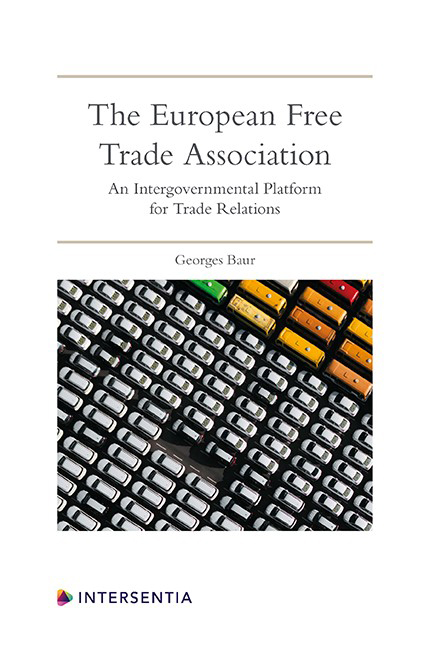Book contents
- Frontmatter
- Foreword
- Preface
- Acknowledgements
- Contents
- List of Tables and Figures
- Chapter 1 What is EFTA?
- Chapter 2 Short Historical Overview
- Chapter 3 Substantive Fields of Activity of EFTA
- Chapter 4 EFTA Institutions, Membership, Scope and Other General Provisions
- Chapter 5 Trade Relations with Third Countries and Groups of Countries
- Chapter 6 The Relations between the EFTA States and the EU/EEA
- Chapter 7 Conclusion: EFTA Membership for the UK Post-Brexit?
- Convention Establishing the European Free Trade Association
- Annex K. Free Movement of Persons (Chapter VIII)
- Annex T. Arbitration (Art. 48)
- Index
- About the Author
Chapter 2 - Short Historical Overview
Published online by Cambridge University Press: 21 July 2020
- Frontmatter
- Foreword
- Preface
- Acknowledgements
- Contents
- List of Tables and Figures
- Chapter 1 What is EFTA?
- Chapter 2 Short Historical Overview
- Chapter 3 Substantive Fields of Activity of EFTA
- Chapter 4 EFTA Institutions, Membership, Scope and Other General Provisions
- Chapter 5 Trade Relations with Third Countries and Groups of Countries
- Chapter 6 The Relations between the EFTA States and the EU/EEA
- Chapter 7 Conclusion: EFTA Membership for the UK Post-Brexit?
- Convention Establishing the European Free Trade Association
- Annex K. Free Movement of Persons (Chapter VIII)
- Annex T. Arbitration (Art. 48)
- Index
- About the Author
Summary
FROM EFTA's FOUNDATION TO THE UK's ACCESSION TO THE EEC
The foundation of EFTA forms part of the movements for European integration, which were among the major political and economic developments in Western Europe after the end of the Second World War.
After the creation of the European Community for Coal and Steel (ECSC) in July 1951 and during the negotiations to create a European economic community as well as Euratom (European community for atomic affairs), treaties which were signed in July 1957, the United Kingdom proposed at the ministerial conference of the Organisation for European Economic Cooperation (OEEC) in July 1956 the creation of a large Western European free trade zone. It was designed to be composed of the six member states of the EEC and all other OEEC states, including the future seven EFTA states. Negotiations had been conducted very intensively in the so called ’ Maudling committee’. In 1958 however, negotiations had to be broken off as differences could not be overcome between the parties.
In June 1959, high-level officials of the seven countries, Denmark, United Kingdom, Norway, Austria, Portugal, Sweden and Switzerland, met near Stockholm to sketch a plan of how to create a free trade zone between those seven countries. In July of the same year, ministers of those countries decided to start negotiations on the basis of this plan as soon as the following autumn. These negotiations led to a finalisation of the text of the EFTA Convention on 20 November and its signature by the seven ministers on 4 January 1960. The Convention was swiftly ratified and entered into force on 3 May 1960; a separate protocol then extended the Convention to the principality of Lichtenstein, which since 1923 had formed a customs union with Switzerland. Finland joined on 27 March as an associated state. The Association Agreement entered into force on 26 June 1961. Iceland joined both the EFTA Convention and the Association Agreement with Finland on 1 March 1970.
Following its foundation EFTA had two major goals: first, the introduction of free trade in industrial goods and several processed agricultural and fisheries products between its member states, and, second, the creation of a free trade area comprising both the seven members of EFTA and the six EEC member states.
- Type
- Chapter
- Information
- The European Free Trade AssociationAn Intergovernmental Platform for Trade Relations, pp. 9 - 20Publisher: IntersentiaPrint publication year: 2020



